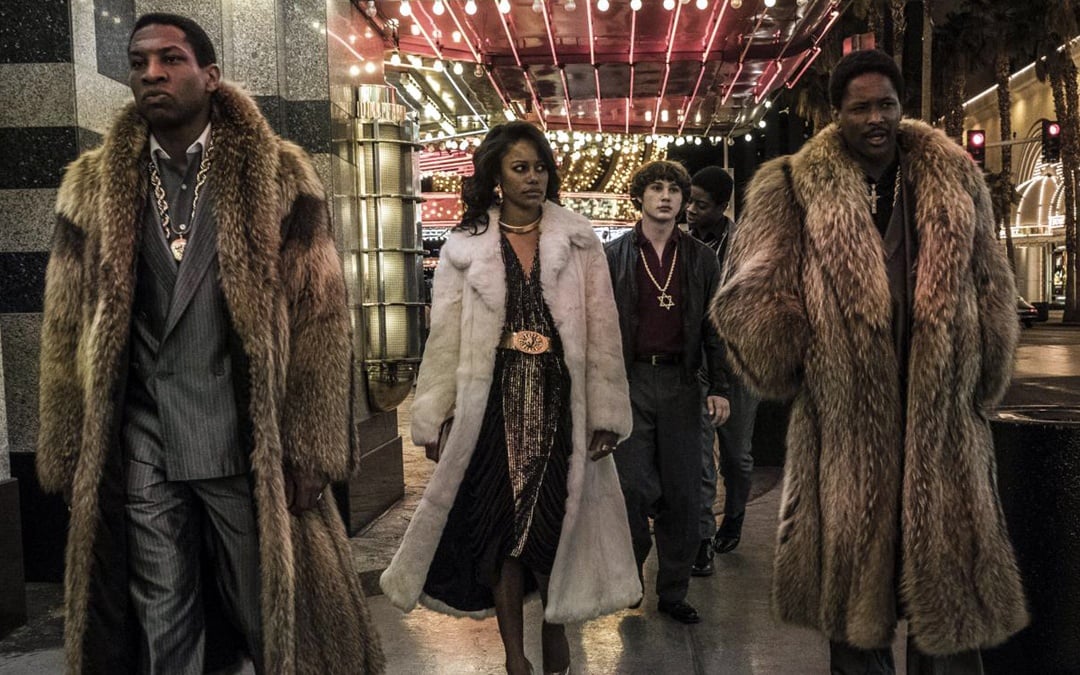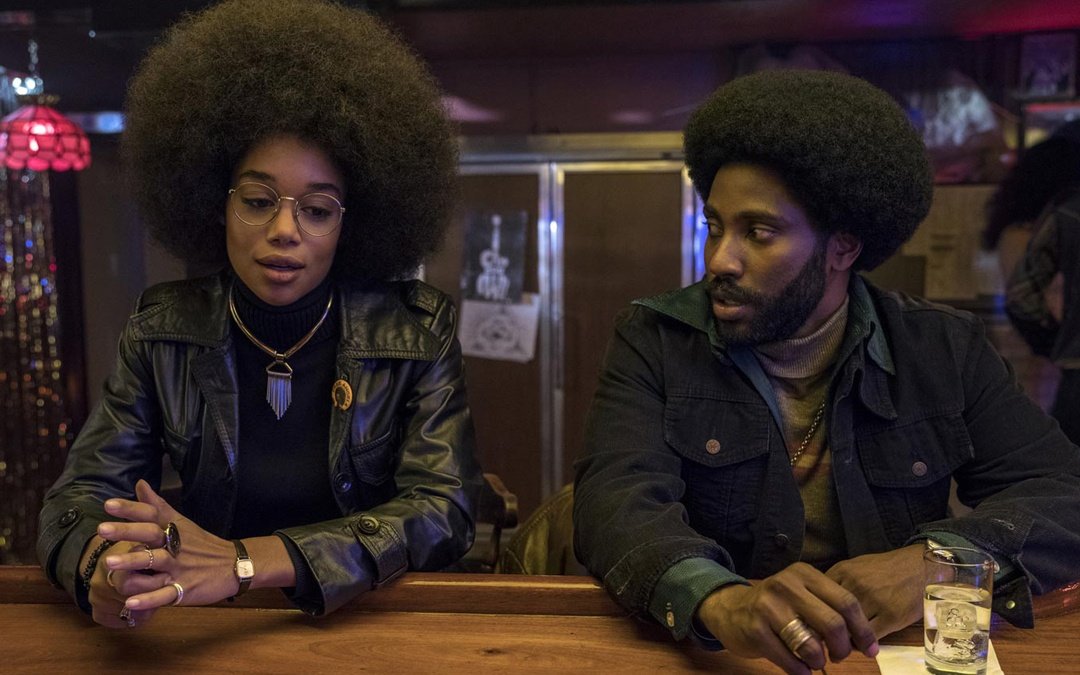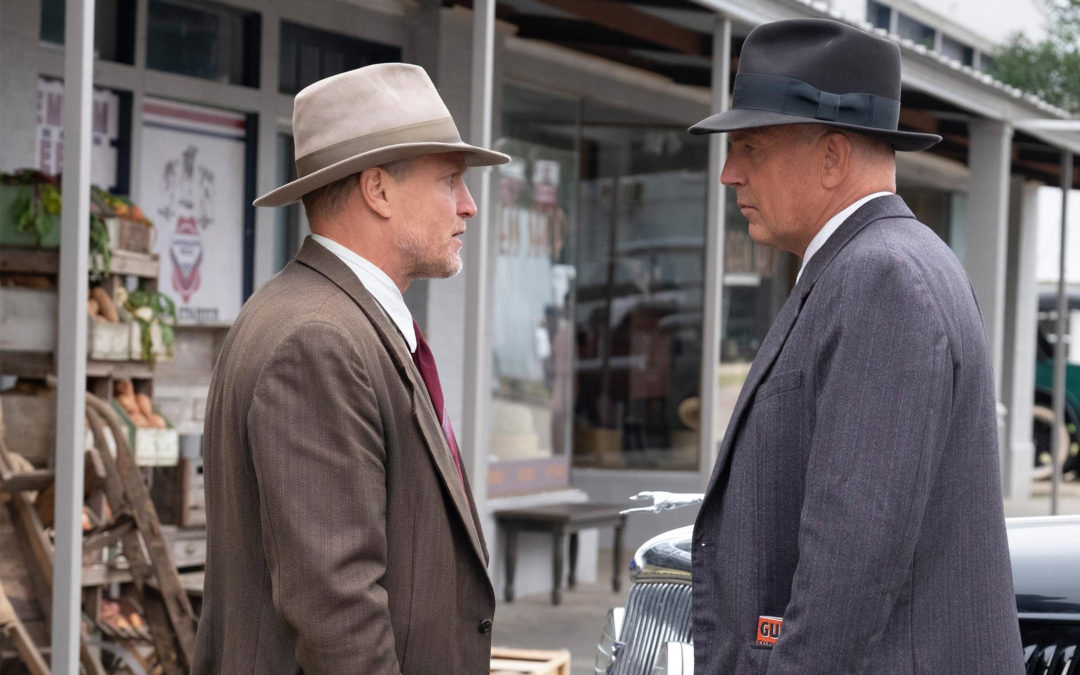All the Write Movies: 'The Highwaymen'
April 8, 2019
Everything about Netflix’s latest big-budget feature, The Highwaymen, evokes sensations from the past. Telling the real-life story of former Texas Rangers who were recruited to hunt down notorious Depression-era criminals Bonnie Parker and Clyde Barrow, the movie takes place in the 1930s. And thanks to the leisurely directing approach of John Lee Hancock paired with the classical screenwriting of veteran scribe John Fusco, the style of the picture is unapologetically retro. The Highwaymen is a tough movie, but the pacing and tone recall work done by the great director John Huston circa the ’70s. To be clear, that’s praise.
Alas, some viewers will find The Highwaymen challenging because the picture takes its time—and then some. A silent shot of leading man Kevin Costner scowling at some perceived moral failure carries as much weight as a shootout in the film. Similarly, minimalistic verbal exchanges between Costner and co-star Woody Harrelson speak to a bygone era when contemplation was as important to cinematic storytelling as adrenaline. For all of these reasons, insights gleaned from examining The Highwaymen run a bit deeper than usual.
A Change in Perspective
While Bonnie and Clyde (1967), with Faye Dunaway and Warren Beatty in the title roles, is the most famous cinematic treatment of this particular story, that film was neither the first nor the last instance of Hollywood dramatizing the exploits of the Barrow Gang. Yet, The Highwaymen treats Bonnie and Clyde so peripherally that the actors playing them never even speak onscreen. This reflects a clever literary approach that many writers before Fusco have employed to great effect.
Prior examples include Valerie Martin’s 1990 novel Mary Reilly, which was adapted into a disappointing 1996 movie of the same name. Martin’s ingenious story revisits Dr. Jekyll and Mr. Hyde through the eyes of a housemaid in Dr. Jekyll’s employ. Similarly, Sena Jeter Naslund’s 1999 novel Ahab’s Wife fleshes out a character barely mentioned in Herman Melville’s 1851 opus Moby-Dick. As The Highwaymen illustrates, this approach works just as well for stories drawn from real life.
Bonnie and Clyde became folk heroes by robbing banks at a moment in American history when nearly everyone hated banks. Normally, storytellers hit this notion head on, illustrating how the Barrow Gang’s popular support helped them evade capture. The Highwaymen takes the opposite perspective, depicting the Barrow Gang’s popular support as a negative rather than a positive. This is just one of many ways that focusing on lesser-known pursuers rather than their famous quarry keeps The Highwaymen conceptually valid.
Summing up, if there’s a tale you love even though it’s been told many times, look for a supporting character who provides a new lens for the story’s themes. Chances are you’ll discover possibilities within the story that no one has previously examined, creating the equivalent of a brand-new narrative.
Takeaway: Even the oldest stories have new angles.
Having a Moment
About halfway through The Highwaymen, the film’s best running joke leads to a seemingly unnecessary moment. [Minor spoilers to follow] Throughout the picture, Harrelson’s character, Maney Gault, suffers a weak bladder. This device allows Fusco to spark lots of enjoyable bickering between Maney and Costner’s character, tough-guy lawman Frank Hamer, while also servicing the picture’s theme about men of action confronting the ravages of time.
At one point, while Frank and Maney are in a bar pumping a Barrow Gang accomplice for information, Maney excuses himself to the bathroom and unexpectedly enters a one-sequence subplot. Maney gets approached by would-be robbers while urinating by them. But just when it seems the encounter will go very badly for Maney, he proves more formidable than viewers thought, distracting one of the crooks long enough to gain the upper hand. In an instant, Maney transforms from comic-relief sidekick to badass action hero.
Is this scene necessary for pushing the narrative forward? No. Is it logically consistent with how Maney is portrayed in the rest of the picture? Again, no. Despite all of that, it is arguably Harrelson’s most resonant moment, excepting his entrance. It’s also a great jolt of energy during a slow stretch of the plot, when the main characters are caught in a grind of tedious detective work. In mainstream movies, a great moment almost always justifies its own existence, even if it isn’t necessary to the plot. Viewers rarely complain about enjoying a scene too much.
Takeaway: Done well, an applause moment jumps off the page.
Ranger Danger
In the abstract, Frank Hamer seems like an ideal Fusco character: a man pulled out of retirement not by the promise of money and glory, but by the recognition of a job that needs doing. He is duty personified. As Fusco presents him, Frank concedes that he’s a killer, but he believes that society benefits every time he eliminates a deadly menace.
If Frank was a fictional construct, these aspects of his characterization would seem appropriately mythic. Because Frank existed in the real world, Fusco’s interpretation of his heroism is a more complicated matter. For instance, the real Frank was accused of threatening a politician who investigated the use of what would now be termed excessive force by the Texas Rangers. It therefore seems highly probable that by today’s standards, the real Frank in his totality might be perceived as an affront to, rather than an avatar of justice.
Seen in that light, does Fusco’s generally sympathetic treatment of Frank represent a historian’s attempt to present him as he would have been seen in his time? Or does Fusco’s treatment sand away Frank’s rough edges by suggesting that whatever lines this lawman crossed, he did so for socially acceptable reasons? In its best moments, as when Frank shares a surprising conversation with Clyde Barrow’s father, The Highwaymen becomes something like a Clint Eastwood-style meditation on violence. In its least satisfying moments, the picture becomes something closer to a John Milius-style defense for unchecked abuse by anyone wearing a badge.
The overarching consideration here is that old ideas don’t always resonate with new audiences, so if you want to portray a character whose ideology stems from another era, consider contextualizing the character with moments—like the conversation with Clyde Barrow’s father. These moments give voice to the type of dimensional moral contemplation that we expect from contemporary entertainment. You need not alter a character’s historical truth, but you should always look for opportunities to acknowledge when a character’s historical truth has ugly aspects.
Takeaway: Whenever dramatizing the past, consider the divide between historical and contemporary attitudes.
Written by: Peter Hanson
Peter Hanson is a Los Angeles-based writer, filmmaker and teacher. He directed the screenwriting documentary Tales from the Script, and he teaches at Pepperdine University and UCLA Extension. He provides script consulting at www.GrandRiverFilms.com.- Topics:
- Discussing TV & Film




